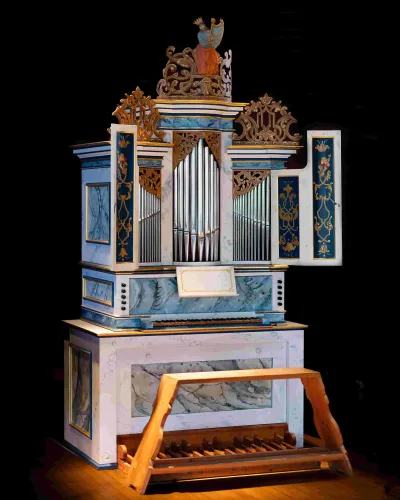Overview
This is an 18th-century style German chamber organ, designed for continuo accompaniment in both instrumental and vocal music, for solo recitals, and for the 18th-century organ concerto repertoire. It is also a practice instrument of the highest quality for organ students on campus. The instrument was designed and built for Barnes Hall in 2003 by Munetaka Yokota and colleagues at the Göteborg Organ Art Center (University of Göteborg, Sweden). Its specification is based on several central German chamber organs from the late-17th and early-18th centuries. The visual design is modeled on a chamber organ at Schloss Burgk, Germany by J. T. Hübe (1722).
Specification
Manual: (C, D-d3)
- Principal 8’ (Discant; wood)
- Gedackt 8’ (B/D; wood)
- Open Floit 4’ (B/D; wood)
- Quint 3’ (B/D; wood)
- Principal 2’ (B/D; metal)
Pedal: (C, D-d1)
- Pull-down from Manual
Pitch: A=415 Temperament: Werckmeister III
The instrument is built out of
- European oak and pear for the wooden pipes
- Tin for the front pipes
- Swedish pine for the case, bellows, pedal keyboard and bench
- Lime wood for the wind chest
- European boxwood for the natural key covers
- Hard tropical wood for the accidental key covers
Manually operated bellows system in addition to electric blower

